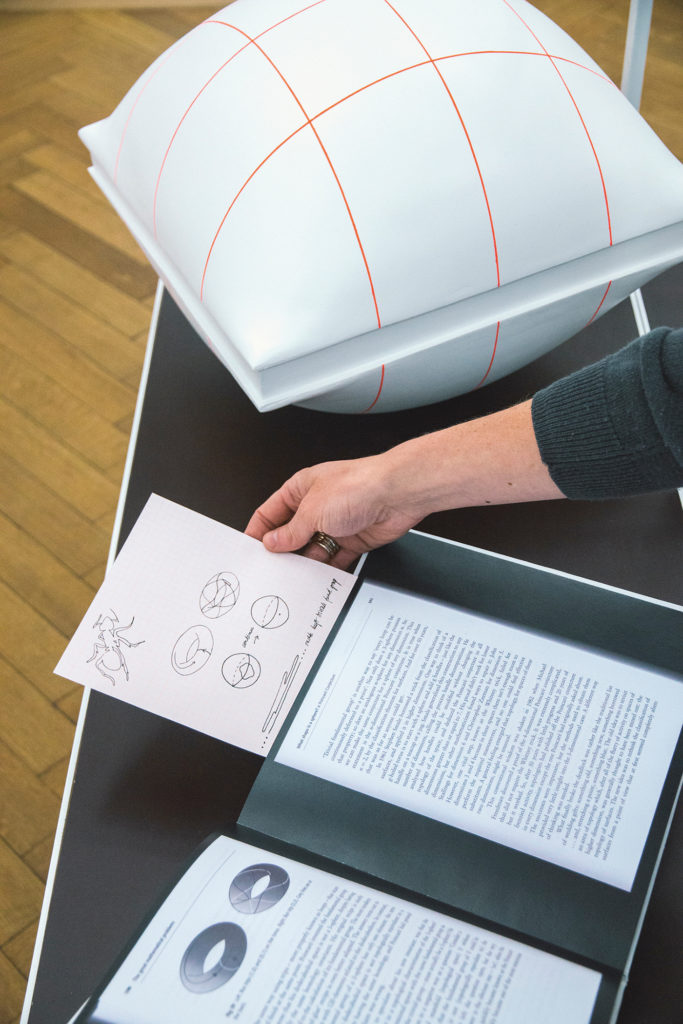SD: For context, a logic gate is an object that transforms and manipulates information stored in bits or qubits. Some examples of logic gates are depicted in the Qubits book. Consider the NOT gate, which negates a bit, switching 0 to 1 and 1 to 0. This is a classic, reversible gate: classic because the gate acts on bits, and reversible because you can determine what the input was based on the output. So, reversibility is not unique to quantum logic gates. There is also a quantum NOT gate, which acts similarly and is also reversible. Reversibility does not mean that information flows in the reverse direction, but rather that you can trace how the bits or qubits transform as they pass through the logic gates. In short, there are reversible logic gates in both classical and quantum computation. In quantum computation, however, reversibility is a requirement. Why? A tenet of quantum computation is that information, as conveyed by qubits, is never lost. This means that I must be able to trace the transformation of information as it passes through logic gates, backwards or forwards. This mandates reversibility.
I am curious about the process of turning the abstract rules of quantum information into tangible, visual artwork. How did you conceive of the pillow-shaped qubits?
FR: The pillow-shaped books as well as the series of pillow-shaped poly dice and qubits run as a common denominatorthrough Shapes of Possibility. You refer to the abstract rules of quantum information and the fact that quantum mechanics introduces a new kind of unpredictability. To determine the original state, you need to measure many of
the same exact quantum states. In the process of comprehending these abstract facts, I started playing around with dice and executing them in different materials by drawing shapes and numbers on flexible paper and constructing new objects. Going back and forth between different dimensions made me wonder about the distortions that occured throughout the process as well as the functionality of the dice. These sphere shaped dice have the illusion of their edges but would never fall on just one number and never show just one direction. There would always be many possibilities.
The unruly character of qubits is fascinating but their true existence still seems to be very fragile. You told me that some current designs for qubits need extreme cold to survive, and thus a quantum computer would look like a gigantic freezer. Why is that?
SD: Quantum information systems can be finicky because they are very sensitive to random fluctuations, like external vibrations. If a quantum system interacts too much with the external environment, the state decoheres, which is to say that the state loses its useful quantum properties. Scientists and engineers go to great lengths to mitigate these sources
of instability. Extremely low temperatures and vibration damping address some of these problems.
In the book Qubits, I saw a drawing of a cat reminiscent of the Cheshire Cat. There is a famous cat in quantum mechanics folklore—Schrödinger’s cat. Can you tell me more about the interplay between the Cheshire Cat and Schrödinger’s cat?
FR: I brought The Game of Logic by Lewis Carroll and your insights about quantum mechanics together. Carroll transferred complex mathematical and physical facts into children’s books. In chapter six of Alice’s Adventures in Wonderland, Alice meets the Cheshire Cat. It constantly grins, can disappear, and can reappear whenever it likes. Sometimes it disappears and leaves its grin behind. The Cheshire Cat’s attitude, reminded me of Schrödinger’s cat, a thought experiment by Austrian physicist Erwin Schrödinger. The Schrödinger’s cat paradox illustrates the problem of quantum mechanics when applied to everyday objects. The scenario implies that after a while, the cat is simultaneously alive and dead. Yet, when one looks in the box, one sees the cat either alive or dead, not both alive and dead. This poses the question of when exactly quantum superposition ends and reality collapses into one possibility or the other. For me, there are many similarities between the Cheshire Cat and Schrödinger’s cat. They both share a similar context of perception and reality. A reality where two different states of existence can exist similarly. Maybe Schrödinger drew the inspiration for his paradox in 1935 from Carroll’s Cheshire Cat, maybe not.
The size of a quantum is almost unimaginable when we relate it to our human size and the world that surrounds us. How we relate to scale depends on our perspective, and that makes it difficult to think about measurement in an abstract way. You told me about h-bar, a perfect mathematical entity.
SD: Just to clarify, despite having a name, h-bar is a number (and what number it is depends on which units you use!). We call h-bar fundamental because it appears in lots of equations that describe ubiquitous laws of nature. h-bar provides a natural sense of scale for a quantum system. Just as a meter stick provides a useful unit of length on human scales, so too does h-bar provide a useful sense of scale for a kind of momentum on quantum scales.
What previous collaborations and artwork motivated the medium for Shapes of Possibility, like the qubit that opened into a book?
FR: I’m really interested to see what happens to mathematical and digital visual surfaces and spaces when they are converted back to physical space. I shift and connect these spaces, digitally and manually, to follow an abstract way of thinking. It results in sculptures and installations. These works are characterized by a blurring between geometrical and organic forms. During conversations with scientists, I invite them to draw with me. The unusual form of the book and its unanticipated position can break through the viewing habits of the spectators and scientists, and can lead to new insights.

